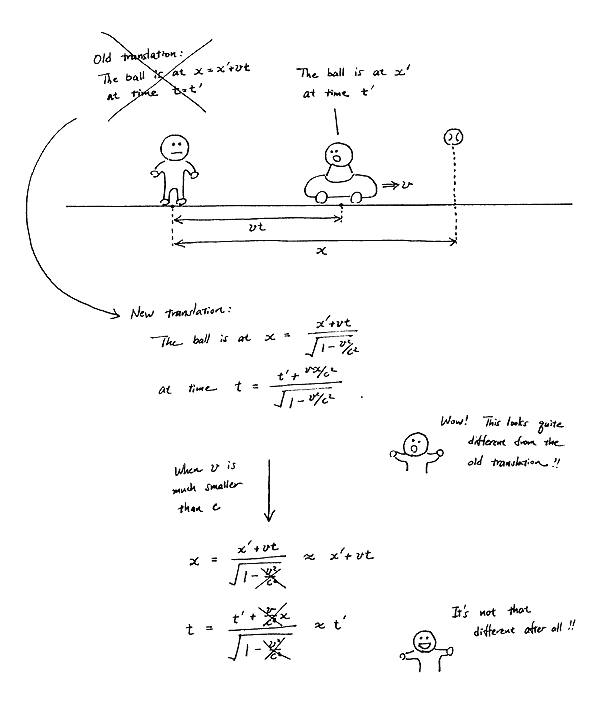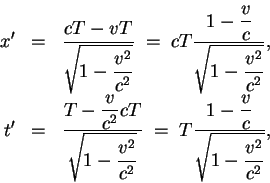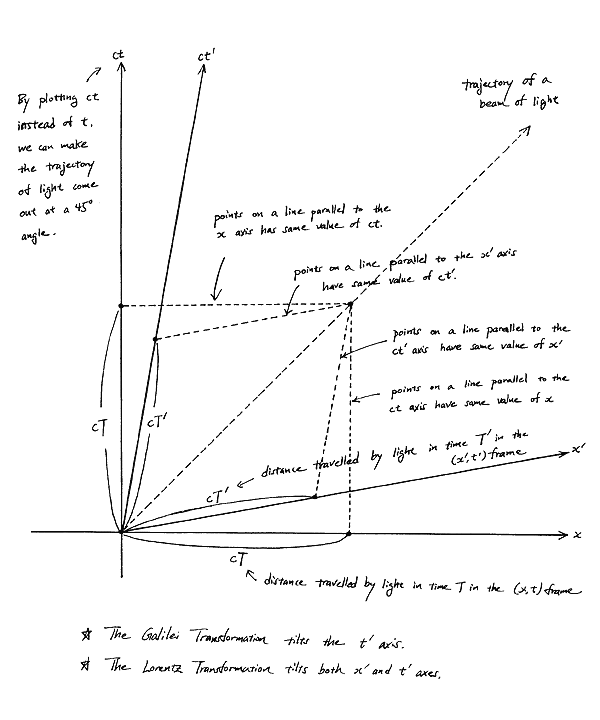

|
College of Science Physics Dept Tatsu Takeuchi Special Relativity Lecture Notes |
 1
2
3
4
5
6
7
8
9
10
11
12
13
14
15
16
17
1
2
3
4
5
6
7
8
9
10
11
12
13
14
15
16
17

8. The Lorentz TransformationWhat Einstein's special theory of relativity says is that to understand why the speed of light is constant, we have to modify the way in which we translate the observation in one inertial frame to that of another. The Galilei transformation 
is wrong. The correct relation is 
This is called the Lorentz transformation. 
You can see that if the relative velocity v between the two frames are much smaller than the speed of light c, then the ratio v/c can be neglected in this relation and we recover the Galilei transformation. So the reason why we did not have any problems with the Galilei transformation up to now is that v was small enough for it to be a good approximation of the Lorentz transformation. Let's check that this relation does indeed show that the speed of light is the same in both frames (x,t) and (x',t'). Let's say that a beam of light started out from the origin x'=x=0 at time t'=t=0. Since the speed of light is c, at time t=T, the beam of light would have traveled to the point x=cT in the (x,t) frame. In the other frame, this point is observed as 
so the speed of light in the (x',t') frame would also be: 
The following figure shows a graphical representation of the Lorentz transformation:

|